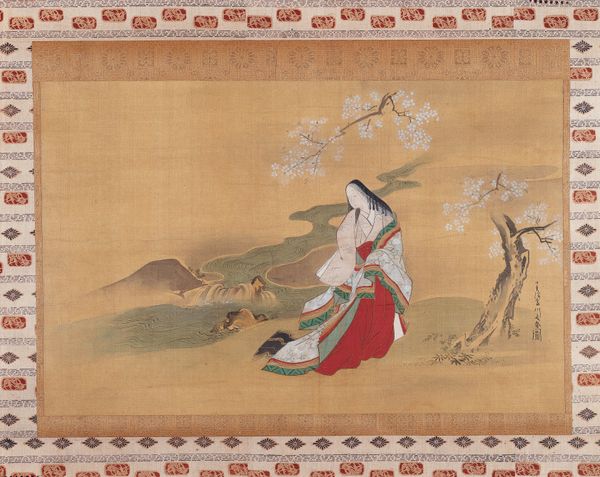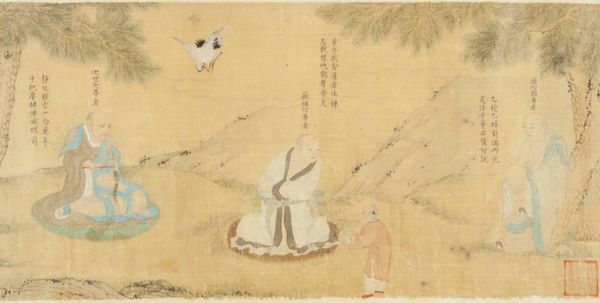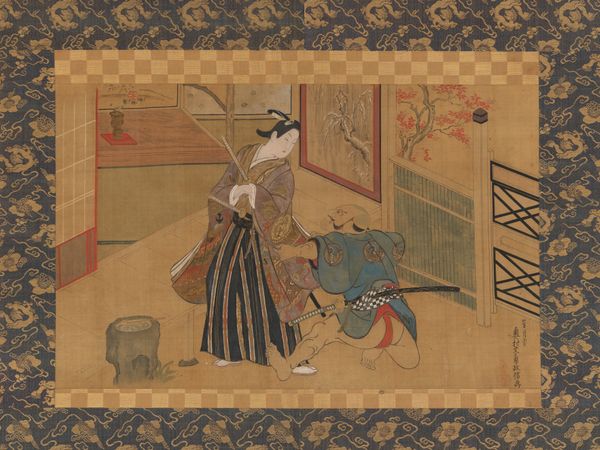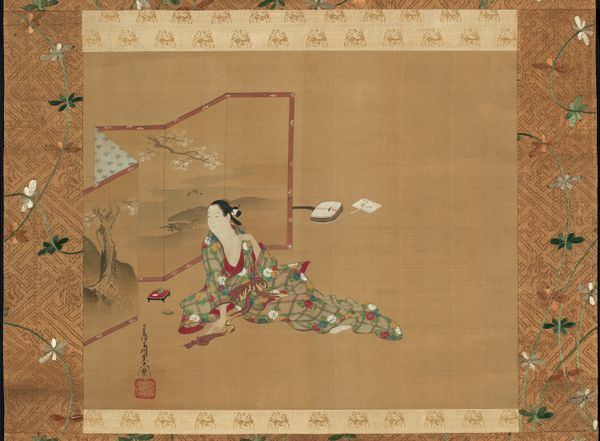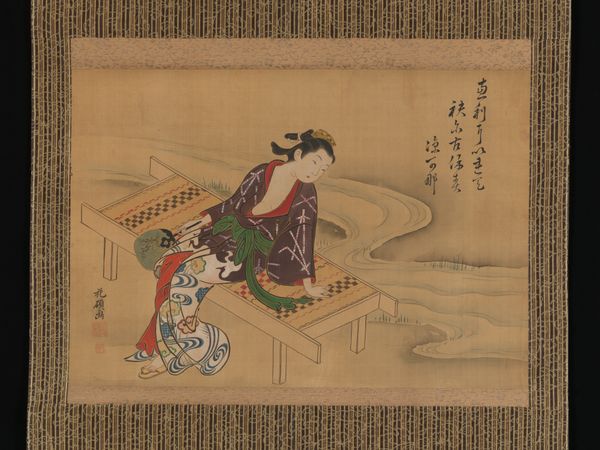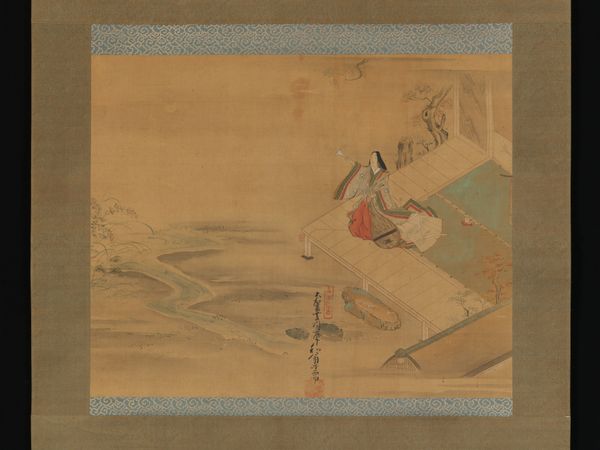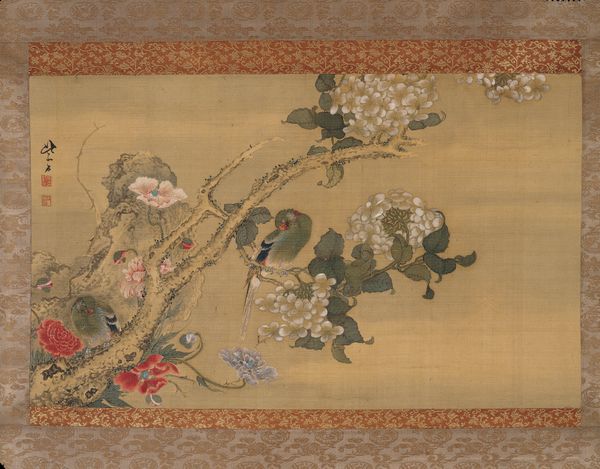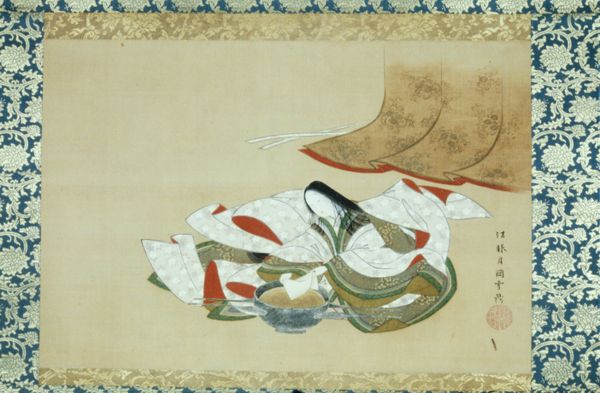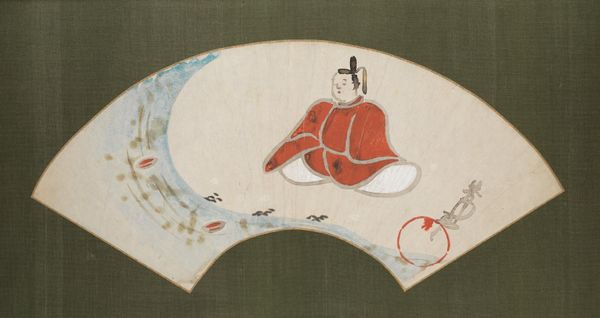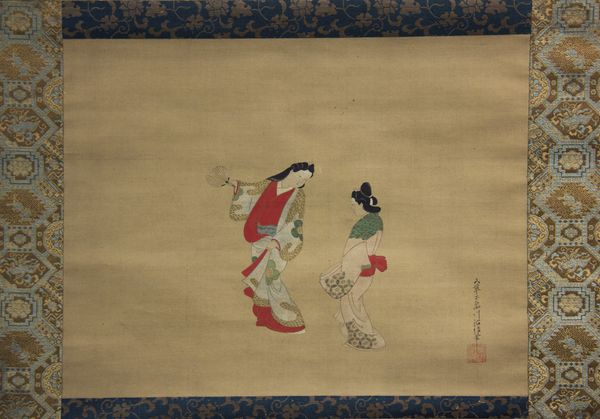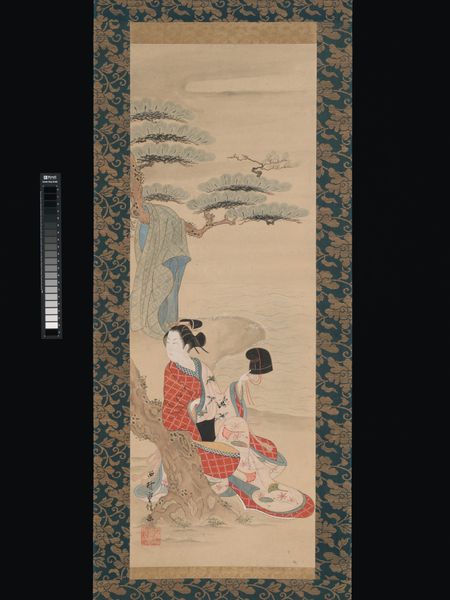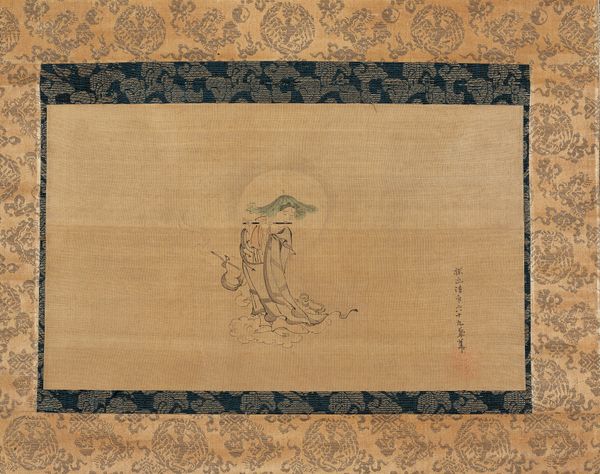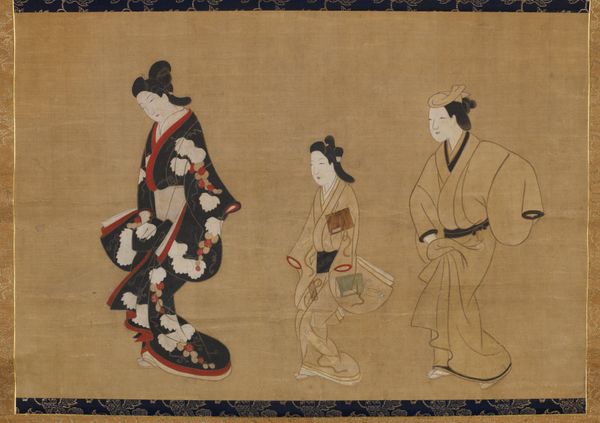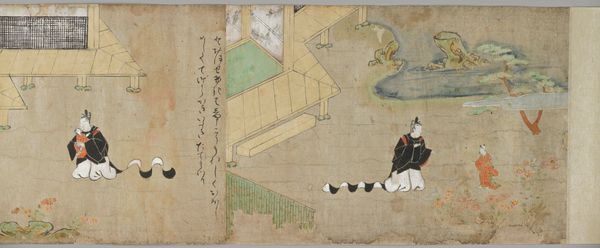
The God Izanagi and Goddess Izanami 1700 - 1750
0:00
0:00
painting, watercolor
#
water colours
#
painting
#
asian-art
#
folk art
#
watercolor
#
folk-art
#
watercolor
Dimensions: Image: 15 1/16 × 22 7/16 in. (38.3 × 57 cm) Overall with mounting: 49 13/16 × 27 5/16 in. (126.5 × 69.4 cm) Overall with knobs: 49 13/16 × 29 7/16 in. (126.5 × 74.7 cm)
Copyright: Public Domain
Editor: This painting, "The God Izanagi and Goddess Izanami," dates from 1700-1750 and is attributed to Nishikawa Sukenobu. It's done in watercolor. I find the figures so serene, almost detached, floating on what seems to be clouds above the water. What strikes you most about this piece? Curator: It’s interesting you use the word detached, because in many ways, that's how dominant narratives have often treated non-Western art – removed from its socio-political context. But this image! It offers a powerful visual representation of creation, doesn't it? How do you see this imagery interacting with notions of gender roles and power within the Shinto creation myth? Editor: Well, they’re a couple, right? Are you suggesting that their roles within the myth are not equal or perhaps that they have been misinterpreted? Curator: Precisely. Early interpretations often relegated Izanami to a secondary role after the birth of fire, focusing on Izanagi’s later actions. However, if we re-center Izanami – consider her role in the initial creation act and her subsequent descent into the underworld – what can that tell us about the painting’s deeper message regarding female agency and the cyclical nature of life and death? Is this just a story about beginnings, or is there a critique of patriarchal narratives embedded within? Editor: So, by reconsidering the myth through a feminist lens, we might find a re-evaluation of Izanami’s power? That’s a whole new way to view this. Curator: Exactly. Art gives us the opportunity to question established perspectives, revealing hidden meanings and challenging social constructs. It asks us to constantly re-evaluate the narratives we inherit. Editor: That’s powerful. I’ll definitely be looking at a lot of other art we study with this context in mind.
Comments
No comments
Be the first to comment and join the conversation on the ultimate creative platform.
